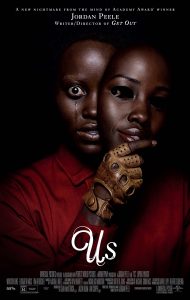Hayao Miyazaki’s Studio Ghibli has experienced so much success that, in the public mind, it has utterly co-opted the Japanese cinematic ‘anime’ landscape. When most of us think of the ‘anime’ film, we fondly remember Chihiro’s heroic exploits in Spirited Away, Satsuki and Mei’s sisterly bonds in My Neighbour Totoro, or Sophie’s epic, life-changing journey in Howl’s Moving Castle. However, it’d be naïve to think Studio Ghibli has always had – and always will have – a monopoly over this special kind of film. And as its own masterful co-founder Miyazaki recedes from the filmmaking sphere, along with his studio, it’s even more important that new voices continue emerging.
In this Corner of the World is a new, beautiful film that bears many trappings of the quintessential Ghibli film. It features a female protagonist, Suzu (Rena Nōnen), who’s embroiled in myriad difficulties faced by the people of in WWII Japan. It deals with many familiar Ghibli themes, such as female autonomy and independence, the paramountcy of warm friendships and the vicissitudes of an often unkind planet. The film is also visually composed of the same exquisitely hand-drawn animation that has endeared so many to Studio Ghibli’s films.
This resemblance is quickly explicable. Director Sunao Katabuchi, in his university years particularly, was mentored by Hayao Miyazaki, writing for his television series, Sherlock Hound. Having said that, Katabuchi is not captive to Miyazaki’s ideas and style, rather fairly influenced by them; perhaps as Robert Altman has clearly inspired Paul Thomas Anderson’s oeuvre. Katabuchi’s torridly tormenting depiction of life in WWII Japan, augmented by montages with deeply hallucinating effects, is the clearest point of departure from Miyazaki’s cinematic textures. Katabuchi is prepared to mine territory – historical and psychological – far darker than Miyazaki ever was.
We first see Suzu as a young schoolgirl in the late 1930s. She spends most of her time daydreaming and sketching. Her life is rather rosy, though she does have a cruel older brother, Yoichi. Time jumps around without warning, and before we know it Suzu has grown up, forced to adjust to the rigid realities of adult life. She lives quaintly in her hometown of Eba, making Nori for her Grandmother’s local business. Everything changes the day a stranger, a man named Shusaku (Yoshimasa Hosoya), proposes marriage. At first, she evades Shusaku, but eventually acquiesces and goes to live with him and his family in Kure.
In this Corner of the World, at its core, is a film about transition; from childhood to adulthood, from bachelorette life to married life, from peacetime to wartime. These changes are seen exclusively through the lens of Suzu’s character, who struggles with the necessary process of adaption. This is perfectly crystallised in a scene where bombs are falling on Hiroshima. Instead of portraying the assault with a sense of existential danger, flourishes of coloured paint explode on the screen. Suzu’s childish imagination supplants her more mature instincts, helping her avoid the true desolation of war, and even her shaky, distant marriage to Shusaku.
By virtue of the milieu this film is set in, we’re unremittingly sensitive to the dangers posed by WWII. While portions of the film deal with Suzu’s personal anxieties, the War invariably lingers in the background. By the mid-1940s, the War assumes primacy in Suzu’s life, forcing her to confront traumatic images of human suffering. The brilliant, bright colour encased early in the film’s animation shifts to diluted colour schemes of grey and browns, reflecting the bleakness of life in WWII Japan. Loved ones die in battle, and impoverished citizens starve in the streets. Suzu’s romantic uncertainties are put on hold indefinitely.
Katabuchi has made Suzu an unquestionably sympathetic character. We’re encouraged to relate to her plight, and excuse her for doing little to ameliorate her nation’s circumstances. The matter of what people should do during wartime – whether they should take up arms and join in battle, resist the government’s push towards conflict, or merely support one’s fellow civilians – is an age-old question that isn’t answered here. Katabuchi gestures that what is important is how the people of a country respond to such devastation.
In this Corner of the World is screening from 7th December through Umbrella Entertainment.





